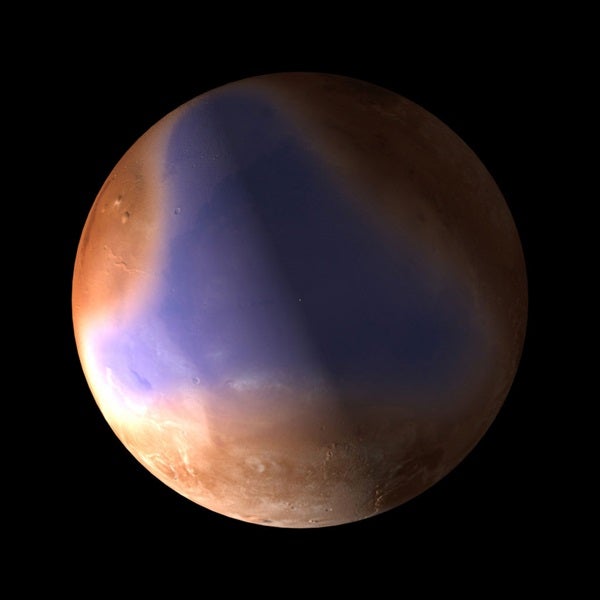The Mars Advanced Radar for Subsurface and Ionosphere Sounding (MARSIS) radar was deployed in 2005 and has been collecting data ever since. Jérémie Mouginot from the Institute for Planetary Science and Astrophysics of Grenoble (IPAG) and the University of California, Irvine, and colleagues have analyzed more than two years of data and found that the northern plains are covered in low-density material.
“We interpret these as sedimentary deposits, maybe ice-rich,” said Mouginot. “It is a strong new indication that there was once an ocean here.”
The existence of oceans on ancient Mars has been suspected before, and features reminiscent of shorelines have been tentatively identified in images from various spacecraft. But it remains a controversial issue.
Two oceans have been proposed: Four billion years ago, when warmer conditions prevailed, and also three billion years ago when subsurface ice melted following a large impact, creating outflow channels that drained the water into areas of low elevation.
“MARSIS penetrates deep into the ground, revealing the first 200–260 feet (60–80 meters) of the planet’s subsurface,” said Wlodek Kofman from IPAG. “Throughout all of this depth, we see the evidence for sedimentary material and ice.”
The sediments revealed by MARSIS are areas of low radar reflectivity. Such sediments are typically low-density granular materials that have been eroded away by water and carried to their final destination.
This later ocean would, however, have been temporary. Within a million years or less, Mouginot estimates, the water would have either frozen back in place and been preserved underground again or turned into vapor and lifted gradually into the atmosphere. “I don’t think it could have stayed as an ocean long enough for life to form.”
In order to find evidence of life, astrobiologists will have to look even further back in Mars’ history when liquid water existed for much longer periods.
Nevertheless, this work provides some of the best evidence yet that there were once large bodies of liquid water on Mars and is further proof of the role of liquid water in the martian geological history.
“Previous Mars Express results about water on Mars came from the study of images and mineralogical data as well as atmospheric measurements. Now we have the view from the subsurface radar,” said Olivier Witasse from ESA. “This adds new pieces of information to the puzzle, but the question remains: where did all the water go?”
Mars Express continues its investigation.










